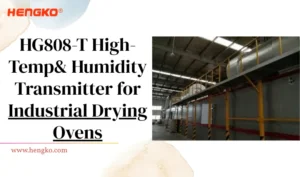
HG808-T High-Temperature Humidity Transmitter for Industrial Drying Ovens
HG808-T High-Temperature Humidity Transmitter for Industrial Drying Ovens In many manufacturing processes, drying is more
Tiny Drops, Big Impact: How Dew Point Transmitters Shape Your World
Головна сторінка " Датчик точки роси
Дізнайтеся про ключові фактори, які слід враховувати при виборі оптимального датчика температури і вологості точки роси для надійного і точного моніторингу навколишнього середовища в різних сферах застосування від HENGKO.
Check Dew Point Sensor / Transmitter Selection Guide First
| Модель | За умовами застосування | Ключові особливості |
| 1. Inline Dew Point Transmitter (Small HG602 Series ) | ||
Standard Precision Вимірювання точки роси Dew Point Range: -60 … +60°C | - ±2 °C (±3.6℉)Td Accuracy (Dew Point) | |
| HG602-G (new) | Acidic / Corrosive Gas Environment Dew Point Monitoring Dew Point Range: -60 … +20°C | – ±3 °C (±5.4℉)Td Accuracy (Dew Point) – 316L stainless steel + anti-corrosion coating – Oil, salt spray & acid resistant (IP65 housing) – Suitable for HF, Cl₂, NH₃ and organic vapor applications |
Cold and Dry Environment Вимірювання точки роси Dew Point Range: -30 … +50°C | - ±1℃ (±3.6℉) Td Accuracy (Dew Point) | |
| 2. Box Type Dew Point Transmitter ( HG808 Series ) | ||
| HG808-D | Вимірювання точки роси за нормальної температури навколишнього середовища Dew Point Range: -60 … +90°C | – Dew Point Accuracy: ±2℃ (±5.4℉) Td |
Chemical / Acidic / Solvent Gas Monitoring Dew Point Range: -60 … +20°C | – Dew Point Accuracy: ±3℃ (±5.4℉) Td | |
| HG808-A | Ultra High Temperature Moisture-Sensitive Applications + Dew Point Measurement Dew Point Range: -20 … +100°C | – Dew Point Accuracy: ±3℃ (±5.4℉) Td – Operates +80 °C to +180 °C (200 °C Short-lived) – 316L stainless steel sensor housing – Fast response & long-term stability under heat stress |
HG602 Series
Вбудований датчик точки роси - це інноваційний інструмент, розроблений для безперешкодної інтеграції в різні промислові та комерційні системи.
HG808 Series
HENGKO пропонує широкий асортимент датчиків температури і вологості точки роси для багатьох застосувань.
HENGKO пропонує широкий спектр промислових датчиків температури і вологості, придатних для різних потреб моніторингу, починаючи від сенсорні щупи з нержавіючої сталі до датчики точки роси а також 6 видів пристроїв для моніторингу температури та вологості. Ми зосереджені на створенні точних, надійних і довговічних датчиків, що робить їх ідеальними для різноманітних застосувань.
HG970 Series
Ручний вимірювач точки роси - це компактний, портативний прилад, призначений для точного і зручного вимірювання вологості в різних середовищах.
HENGKO є світовим лідером у галузі промислових сенсорних рішень, з репутацією унікального дизайну та відмінними характеристиками. Наші датчики температури та вологості використовуються в широкому спектрі галузей промисловості, включаючи харчову, фармацевтичну, виробничу та екологічний моніторинг.
Ви можете повністю налаштувати унікальний датчик точки роси на основі нашої запатентованої серії датчиків точки роси власної розробки.
Ви отримаєте набагато нижчу та конкурентоспроможну ціну завдяки нашому надзвичайно економічно ефективному контролю.
Ви завжди будете відповідати потребам ринку, що постійно змінюються, з нашими продуктами, що постійно модернізуються.
Ви отримаєте потужну маркетингову підтримку, яка допоможе вам успішно продавати продукцію, матеріальна підтримка включає: зображення продукції у високій роздільній здатності, круті відео з 3d-ефектами та багато іншого.










Датчик точки роси для монітора системи стисненого повітря: забезпечення оптимального контролю вологості та якості повітря для вашої компресорної машини
HENGKO є провідним виробником професійних датчиків точки роси, датчиків температури та вологості, а також портативних вимірювачів точки роси. Ми пропонуємо широкий спектр рішень для моніторингу температури та вологості для задоволення ваших конкретних потреб.
Наша продукція відрізняється точністю і надійністю, забезпечуючи оптимальну продуктивність у різних сферах застосування. Незалежно від того, чи потрібен вам високоякісний датчик точки роси або надійний датчик вологості, HENGKO має досвід і продукти для підтримки вашого проекту.
Зв'яжіться з нами сьогодні, щоб обговорити ваші вимоги та знайти найкращі рішення для моніторингу.






The dew point is the temperature to which the air must be cooled to become saturated with water vapor. In other words, it is the temperature at which the air can no longer hold any more water vapor in the form of gas. If the air is cooled further, the excess water vapor will condense into liquid water, forming dew.
The dew point is an important meteorological parameter because it is a measure of the amount of moisture in the air. The higher the dew point, the more moisture the air contains. This can make the air feel muggy or uncomfortable, especially on a hot day.
The dew point is also used to forecast the formation of fog and dew. If the dew point is close to the air temperature, then fog or dew is likely to form. This is because the air is close to becoming saturated, and any further cooling will cause the water vapor to condense.
Here is a table of general comfort levels using dew point:
| Dew Point (°F) | Comfort Level |
|---|---|
| Below 50 | Comfortable |
| 50-60 | Somewhat muggy |
| 60-65 | Muggy |
| 65-70 | Very muggy |
| Above 70 | Oppressive |
As you can see, dew point is a good indicator of how comfortable the air will feel. If you are planning to be outdoors, it is a good idea to check the dew point forecast before you go.
Here are some of the main features of dew point transmitters:
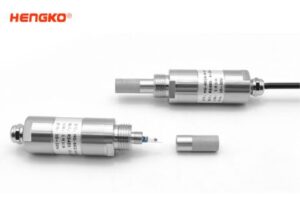
In addition to these main features, dew point transmitters may also offer a variety of other features, such as:
Dew point transmitters are a valuable tool for measuring and monitoring moisture content in a variety of applications. They are accurate, reliable, and versatile, and they can be used to improve the quality of products, protect equipment, and optimize industrial processes.
There are three main types of dew point transmitters: chilled mirror, polymer, and metal oxide.
Охолоджене дзеркало
Chilled mirror dew point transmitters are the most accurate type of dew point transmitter. They work by cooling a mirror until water vapor condenses on its surface. The temperature of the mirror is then measured, and this temperature is the dew point. Chilled mirror dew point transmitters are typically used in applications where high accuracy is required, such as in the pharmaceutical and semiconductor industries.
Полімер
Polymer dew point transmitters are less accurate than chilled mirror dew point transmitters, but they are also less expensive. They work by measuring the change in electrical resistance of a polymer sensor as moisture content changes. Polymer dew point transmitters are typically used in applications where cost is a major concern, such as in the HVAC industry.
Оксид металу
Metal oxide dew point transmitters are similar to polymer dew point transmitters, but they use a different type of sensor. Metal oxide dew point transmitters are typically used in applications where a wide measuring range is required, such as in the food and beverage industry.
Here is a table comparing the three main types of dew point transmitters:
| Особливість | Chilled Mirror | Полімер | Metal Oxide |
|---|---|---|---|
| Точність | Високий | Medium | Medium |
| Вартість | Високий | Низький | Medium |
| Measuring Range | Wide | Narrow | Wide |
| Час відгуку | Slow | Fast | Medium |
| Обслуговування | Високий | Низький | Medium |
| Додатки | Pharmaceutical, Semiconductor | HVAC | Food and Beverage |
The best type of dew point transmitter for a particular application will depend on the specific requirements of the application. In general, chilled mirror dew point transmitters are the best choice for applications where high accuracy is required. Polymer dew point transmitters are a good choice for applications where cost is a major concern. Metal oxide dew point transmitters are a good choice for applications where a wide measuring range is required.
Dew point transmitters are important in a variety of applications, including:
Системи опалення, вентиляції та кондиціонування: Dew point transmitters are used in HVAC systems to control humidity levels. Humidity is important for human comfort and health. Too much humidity can make the air feel muggy and uncomfortable, and it can also lead to the growth of mold and mildew. Too little humidity can make the air feel dry and can also lead to respiratory problems.
Управління промисловими процесами: Dew point transmitters are used in industrial process control to ensure that products are manufactured under the correct humidity conditions. Humidity can affect the quality of many products, such as pharmaceuticals, semiconductors, and food and beverages.
Моніторинг навколишнього середовища: Dew point transmitters are used in environmental monitoring to track changes in moisture content in the atmosphere. This information can be used to forecast weather conditions and to identify potential environmental problems.
Here are some specific examples of how dew point transmitters are used in different industries:
Pharmaceutical industry: Dew point transmitters are used to control humidity levels in clean rooms where pharmaceuticals are manufactured. Humidity levels must be carefully controlled to prevent the degradation of drugs and to ensure that they are manufactured to the highest quality standards.
Semiconductor industry: Dew point transmitters are used to control humidity levels in semiconductor fabrication plants. Humidity levels must be carefully controlled to prevent the contamination of wafers and to ensure that semiconductors are manufactured to the highest quality standards.
Food and beverage industry: Dew point transmitters are used to control humidity levels in food and beverage production facilities. Humidity levels must be carefully controlled to prevent the growth of mold and mildew, to ensure that products have the correct texture, and to extend the shelf life of products.
HVAC industry: Dew point transmitters are used in HVAC systems to control humidity levels in homes, offices, and other buildings. Humidity levels must be carefully controlled to ensure human comfort and health.
Моніторинг навколишнього середовища: Dew point transmitters are used in environmental monitoring stations to track changes in moisture content in the atmosphere. This information can be used to forecast weather conditions and to identify potential environmental problems, such as drought or flooding.
As you can see, dew point transmitters are important in a wide variety of applications. They are essential for ensuring the quality of products, protecting equipment, and optimizing industrial processes.
In addition to the benefits listed above, dew point transmitters can also help to:
Choosing the right dew point transmitter for your compressed air system is crucial for maintaining efficient operation and ensuring the quality of your products. Here’s a comprehensive guide to selecting the most suitable dew point transmitter for your specific needs:
Determine the Required Accuracy: Consider the accuracy requirements of your application. If you need precise dew point measurements, a chilled mirror dew point transmitter is the most accurate option. However, if cost is a primary concern, a polymer or metal oxide dew point transmitter may be sufficient.
Evaluate the Measuring Range: Assess the dew point range you need to measure. Compressed air systems typically operate within a specific dew point range, so ensure the transmitter can cover that range effectively.
Consider Response Time and Maintenance: Response time is essential for detecting changes in dew point quickly. If real-time monitoring is critical, choose a transmitter with a fast response time. Maintenance requirements also vary between types. Chilled mirror transmitters require more maintenance, while polymer and metal oxide transmitters are generally low-maintenance.
Select the Appropriate Output Options: Decide on the output options you need for integration with your system. Common output options include analog (4-20 mA or 0-10 V), digital (RS-485 or Modbus), and alarm relays.
Environmental Considerations: Evaluate the environmental conditions where the transmitter will be installed. Choose a transmitter that can withstand the expected temperature, humidity, and vibration levels.
Additional Features: Consider additional features that may be beneficial, such as data logging, alarm setpoints, and remote access capabilities. These features can enhance monitoring and control capabilities.
Consult with Experts: If you have complex requirements or need assistance in selecting the most suitable dew point transmitter, consult with experienced professionals in the field. They can provide tailored recommendations based on your specific application and needs.
Here’s a summary table to aid in your selection:
| Особливість | Chilled Mirror | Полімер | Metal Oxide |
|---|---|---|---|
| Точність | Високий | Medium | Medium |
| Вартість | Високий | Низький | Medium |
| Measuring Range | Wide | Narrow | Wide |
| Час відгуку | Slow | Fast | Medium |
| Обслуговування | Високий | Низький | Medium |
| Додатки | Pharmaceutical, Semiconductor | HVAC | Food and Beverage |
| Output Options | Analog, Digital, Alarm Relays | Analog, Digital | Analog, Digital |
| Additional Features | Data Logging, Alarm Setpoints, Remote Access | Обмежений | Обмежений |
Вихід 4-20 мА є популярним вибором для датчиків точки роси, оскільки це стандартний промисловий вихід, сумісний з широким спектром систем керування. Це також дуже надійний і завадостійкий вихід, що робить його добре придатним для використання в суворих промислових умовах.
Ось деякі з переваг використання виходу 4-20 мА для датчиків точки роси:
Сумісність: Вихід 4-20 мА сумісний з широким спектром систем керування, включаючи ПЛК, DCS і SCADA. Це дозволяє легко інтегрувати датчики точки роси в існуючі системи керування.
Надійність: Вихід 4-20 мА - це дуже надійний вихід, не чутливий до шумових перешкод. Це важливо для датчиків точки роси, які часто використовуються в суворих промислових умовах.
Точність: Вихід 4-20 мА забезпечує точне вимірювання точки роси. Це важливо для застосувань, де потрібен точний контроль точки роси.
Діапазон: Вихід 4-20 мА може охоплювати широкий діапазон значень точки роси. Це робить його придатним для різних застосувань.
Кост: Вихід 4-20 мА є відносно недорогим у реалізації. Це робить його економічно вигідним варіантом для датчиків точки роси.
На додаток до перерахованих вище переваг, вихід 4-20 мА також є дуже універсальним виходом. Його можна використовувати для передачі різноманітних інших параметрів, таких як температура, тиск і швидкість потоку. Це робить його цінним виходом для широкого спектру промислових застосувань.
Ось кілька прикладів застосувань, де зазвичай використовуються датчики точки роси з виходами 4-20 мА:
Системи стисненого повітря: Датчики точки роси використовуються в системах стисненого повітря для моніторингу та контролю вмісту вологи в повітрі. Це важливо для запобігання корозії та інших пошкоджень обладнання.
Системи опалення, вентиляції та кондиціонування: Датчики точки роси використовуються в системах опалення, вентиляції та кондиціонування повітря для контролю рівня вологості в будівлях. Це важливо для комфорту та здоров'я людини.
Промислові процеси сушіння: Датчики точки роси використовуються в промислових процесах сушіння для моніторингу та контролю вмісту вологи в продукті, що сушиться. Це важливо для забезпечення якості продукту.
Переробка продуктів харчування та напоїв: Датчики точки роси використовуються у виробництві харчових продуктів і напоїв для контролю вмісту вологи в продукті, що переробляється. Це важливо для забезпечення безпеки та якості продукту.
Моніторинг навколишнього середовища: Датчики точки роси використовуються на станціях екологічного моніторингу для відстеження змін вмісту вологи в атмосфері. Цю інформацію можна використовувати для прогнозування погодних умов і виявлення потенційних екологічних проблем.
Як бачите, датчики точки роси з виходами 4-20 мА є цінним інструментом для широкого спектру промислових застосувань. Вони надійні, точні та універсальні, і їх можна легко інтегрувати в існуючі системи управління.
Ціна датчиків точки роси може варіюватися в залежності від виробника, функцій і точності датчика. Загалом, датчики точки роси з вищою точністю та більшою кількістю функцій коштуватимуть дорожче, ніж датчики точки роси з нижчою точністю та меншою кількістю функцій.
Виходячи з мого дослідження, я б сказав, що ціна на датчики точки роси загалом є справедливою. Вартість компонентів і робочої сили, необхідної для виробництва датчиків точки роси, є високою, і компанії, які виробляють датчики точки роси, повинні відшкодовувати ці витрати, щоб залишатися в бізнесі. Крім того, датчики точки роси використовуються в різних критично важливих сферах, тому важливо, щоб вони були надійними і точними. Висока ціна датчиків точки роси відображає той факт, що вони є високоякісними приладами, яким можна довіряти в проведенні точних вимірювань.
Ось деякі фактори, які можуть вплинути на ціну датчика точки роси:
Ось таблиця цінового діапазону датчиків точки роси на ринку:
| Тип | Діапазон цін |
|---|---|
| Охолоджене дзеркало | $2,000 – $10,000 |
| Полімер | $500 – $2,000 |
| Оксид металу | $500 – $1,500 |
Як бачите, діапазон цін на датчики точки роси може варіюватися в залежності від типу датчика. Перетворювачі точки роси з охолодженим дзеркалом є найдорожчим типом датчиків, але вони також є найточнішими. Полімерні та металооксидні датчики точки роси коштують дешевше, але вони також менш точні.
Ціна датчиків точки роси також може варіюватися залежно від функцій датчика. Наприклад, датчики точки роси з реєстрацією даних, тривожними уставками і можливістю віддаленого доступу зазвичай коштують дорожче, ніж датчики точки роси з меншою кількістю функцій.
Якщо ви шукаєте високоякісний датчик точки роси, я б рекомендував придбати його у відомого бренду, який має гарну репутацію щодо якості та надійності. Ви також повинні врахувати важливі для вас функції та точність, яка вам потрібна. Якщо ви не впевнені, який саме датчик точки роси вам підходить, я б рекомендував проконсультуватися з професіоналом, який допоможе вам прийняти обґрунтоване рішення.
деякі питання про точку роси та передавачі і датчики, які ви та інші люди хотіли б знати
A high dew point means that the air can hold a lot of moisture before it becomes saturated and condensation occurs. In general, a dew point above 60°F (15°C) is considered high. High dew points can make the air feel humid and uncomfortable, especially on a hot day.
Actually there are two main types of dew point transmitters, each one with a different working principle, please check as following:
1. Chilled Mirror Dew Point Transmitters:
2. Polymer/Ceramic Sensor Dew Point Transmitters:
Which type is better?
The choice between a chilled mirror and a polymer/ceramic sensor transmitter depends on your specific needs:
I hope this explanation helps!
Feel free to ask or contact our Team by email if you have any further questions about dew point transmitters.
Dew point and humidity are two different measures of the amount of moisture in the air.
1.Dew point is the temperature to which the air must be cooled to become saturated with water vapor. In other words, it is the temperature at which the air can no longer hold any more water vapor in the form of gas. If the air is cooled further, the excess water vapor will condense into liquid water, forming dew.
2.Humidity, on the other hand, is the amount of water vapor in the air, expressed as a percentage of the maximum amount of water vapor that the air can hold. Relative humidity is the most common measure of humidity, and it is calculated by dividing the actual amount of water vapor in the air by the maximum amount of water vapor that the air can hold at that temperature.
There are a few different ways to calculate dew point temperature. The most common method is to use a hygrometer, which is a device that measures both temperature and humidity. The dew point temperature can then be calculated from the temperature and humidity readings using a special formula.
Another way to calculate dew point temperature is to use a psychrometer, which is a device that consists of two thermometers, one with a wet bulb and one with a dry bulb. The dew point temperature can then be calculated from the difference between the wet bulb and dry bulb temperatures using a special table or formula.
No, dew point and humidity are not the same thing. Dew point is a measure of the amount of moisture in the air, while humidity is a measure of the ratio of the amount of water vapor in the air to the maximum amount of water vapor that the air can hold.
Two different air masses can have the same dew point but different humidity levels. For example, a warm air mass with a high dew point can have the same humidity level as a cool air mass with a low dew point. This is because the warm air mass can hold more water vapor than the cool air mass.
There is no cod point in Mountain Dew. Cod points are a unit of measurement used to quantify the amount of cod liver oil in a product. Mountain Dew does not contain cod liver oil.
Комфортний діапазон точок роси для більшості людей - від 40°F (4°C) до 60°F (15°C). При температурі нижче 40°F повітря може здаватися сухим і некомфортним. При температурі вище 60°F повітря може бути вологим і дискомфортним.
A dew point above 60°F (15°C) is considered humid. Humid air feels sticky and uncomfortable, especially on a hot day.
A dew point above 65°F (18°C) is considered muggy. Muggy air feels even more sticky and uncomfortable than humid air.
Dew point meters, also known as dew point transmitters or sensors, have a variety of purposes in different fields. Here are some of the most common ones:
1. Monitoring atmospheric conditions:
2. Controlling humidity levels:
3. Protecting equipment and materials:
4. Research and scientific applications:
Overall, dew point meters are incredibly versatile tools used across various fields to understand and manage humidity levels, ensuring safety, efficiency, and quality in diverse applications.
Testing the humidity in an air cylinder is crucial to ensure the quality and performance of the compressed air it contains. Excessive moisture can lead to corrosion, reduced flow, and malfunctioning of equipment using the air. Here are two common methods for testing humidity in an air cylinder:
1. Chilled Mirror Hygrometer:
2. Hygroscopic Sensor:
Additional Tips:
So Above these methods and tips, you can effectively test the humidity in your air cylinder and ensure the optimal performance of your equipment.
Controlling the dew point in compressed air is crucial for ensuring the quality and performance of your pneumatic equipment. Excessive moisture can lead to corrosion, reduced flow, malfunctioning of equipment, and even contamination of sensitive products. Here are some key methods for controlling dew point in compressed air:
1. Air Dryers:
Air dryers are the most common and effective method for removing moisture from compressed air. They work by lowering the dew point, the temperature at which water vapor condenses. There are two main types of air dryers:
Refrigerant dryers: These dryers use a refrigeration system to cool the compressed air, causing water vapor to condense and drain out. They are suitable for achieving dew points down to around 40°F (4°C).
Desiccant dryers: These dryers use a desiccant material, such as silica gel or alumina, to absorb moisture from the compressed air. They can achieve much lower dew points, down to -40°F (-40°C) or even lower, making them ideal for critical applications
2. Aftercoolers:
3. Drain Traps:
4. System Design and Maintenance:
Additional Tips:
By implementing these methods and tips, you can effectively control the dew point in your compressed air system and ensure the optimal performance and longevity of your equipment.
Dew point transmitters and sensors play a crucial role in regulating moisture levels across various industries. Here are the top 10 applications where these instruments shine:
Ensuring dry and clean compressed air is vital for efficient operation and preventing corrosion in pneumatic equipment. Dew point transmitters monitor dryness levels, optimizing dryer performance and avoiding costly issues.
Precise dew point control is critical for product quality and consistency in chemical and pharmaceutical manufacturing. Precisely measuring and managing moisture prevents reactions, ensures accurate formulations, and safeguards product stability.
Dew point control is crucial for food product quality and shelf life. Monitoring and maintaining optimal moisture levels in storage and processing environments prevents condensation, mold growth, and product spoilage.
Dew point sensors help maintain comfortable humidity levels in buildings and optimize cooling systems. Accurate dew point data allows for proper air conditioning control, maximizing energy efficiency and preventing condensation issues.
Dew point measurements are integral for weather forecasting, climate studies, and agricultural applications. Monitoring dew point variations helps predict frost, dew formation, and other environmental phenomena.
Dew point control is crucial for aircraft safety and performance. Dry air prevents ice formation on critical components, ensuring airworthiness and safe operation.
Maintaining precise dew point levels in medical facilities and biotech labs is essential for sterility and preventing the growth of harmful microorganisms.
Controlling moisture in power plants is crucial for efficient energy production and preventing corrosion in turbines and other equipment. Dew point measurement ensures optimal plant operation and minimizes maintenance costs.
Monitoring dew point during construction helps prevent condensation problems, mold growth, and structural damage. Dew point data informs proper ventilation and drying strategies, ensuring durable and healthy buildings.
Dew point sensors help optimize paint curing processes in car manufacturing and prevent condensation within sealed vehicle components. This ensures high-quality finishes and protects against corrosion.
Above are just a few examples, and датчики точки роси and sensors have numerous applications beyond these ten.
Their versatility and precision in measuring moisture make them invaluable tools across various industries.
Do you have any specific application in mind where you’d like to know more about dew point transmitters and sensors?
Зверніться до HENGKO сьогодні з будь-яких питань щодо датчиків температури та вологості, передавачів та рішень

HG808-T High-Temperature Humidity Transmitter for Industrial Drying Ovens In many manufacturing processes, drying is more
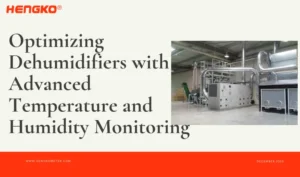
Effective moisture management is essential in facilities where materials, equipment, and processes depend on controlled
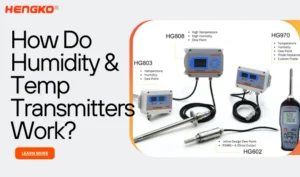
In short, Humidity and temperature transmitters measure and send environmental data to control systems. They
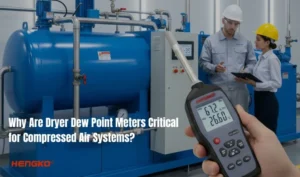
Why Are Dryer Dew Point Meters Critical for Compressed Air Systems? Maybe You always battle

Why One Office Zone is Too Humid & How a Humidity Transmitter Fixes It Persistent
Зверніться до нашої команди експертів за індивідуальною допомогою, і ми оперативно надамо найкращі рішення для датчиків температури та вологості, що відповідають вашим конкретним потребам.

HG808-T High-Temperature Humidity Transmitter for Industrial Drying Ovens In many manufacturing processes, drying is more than just a step — it’s a decisive factor that

HG808-T High-Temperature Humidity Transmitter for Industrial Drying Ovens In many
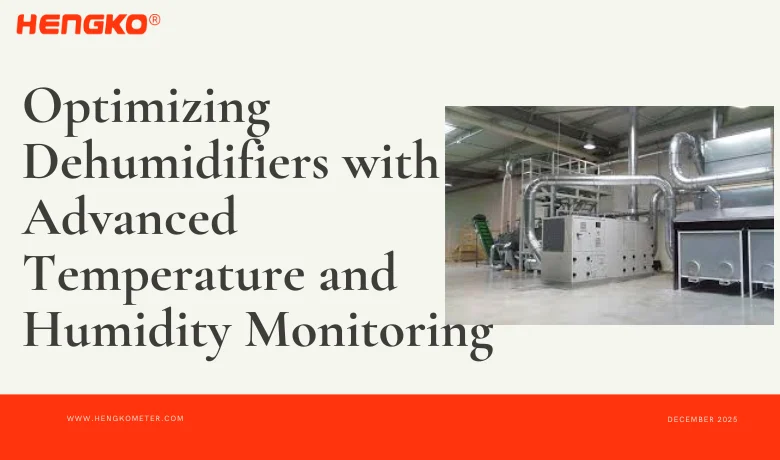
Effective moisture management is essential in facilities where materials, equipment,

In short, Humidity and temperature transmitters measure and send environmental
Напиши нам в WhatsApp.